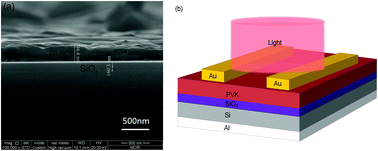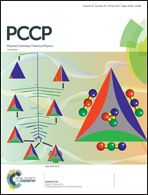Ionic behavior of organic–inorganic metal halide perovskite based metal-oxide-semiconductor capacitors†
Abstract
Organic–inorganic metal halide perovskites are promising semiconductors for optoelectronic applications. Despite the achievements in device performance, the electrical properties of perovskites have stagnated. Ion migration is speculated to be the main contributing factor for the many unusual electrical phenomena in perovskite-based devices. Here, to understand the intrinsic electrical behavior of perovskites, we constructed metal-oxide-semiconductor (MOS) capacitors based on perovskite films and performed capacitance–voltage (C–V) and current–voltage (I–V) measurements of the capacitors. The results provide direct evidence for the mixed ionic–electronic transport behavior within perovskite films. In the dark, there is electrical hysteresis in both the C–V and I–V curves because the mobile negative ions take part in charge transport despite frequency modulation. However, under illumination, the large amount of photoexcited free carriers screens the influence of the mobile ions with a low concentration, which is responsible for the normal C–V properties. Validation of ion migration for the gate-control ability of MOS capacitors is also helpful for the investigation of perovskite MOS transistors and other gate-control photovoltaic devices.



 Please wait while we load your content...
Please wait while we load your content...